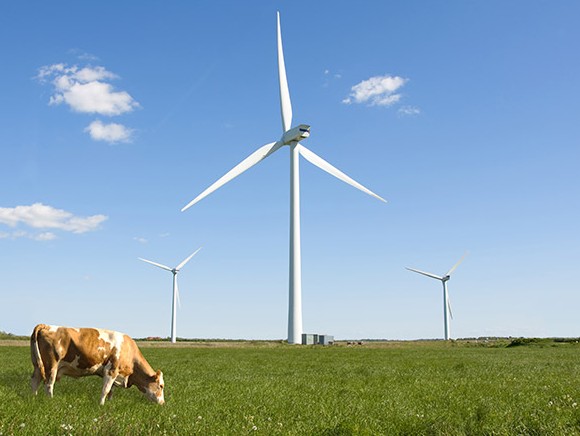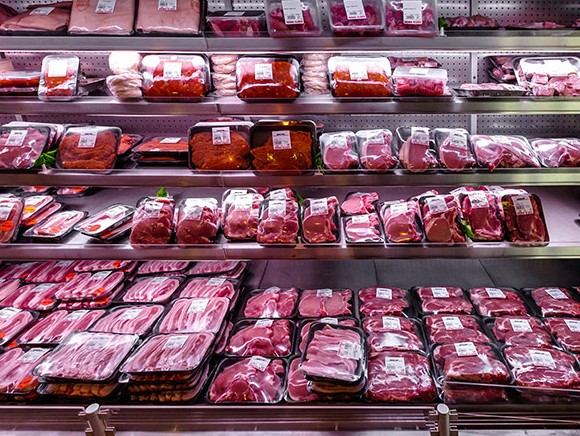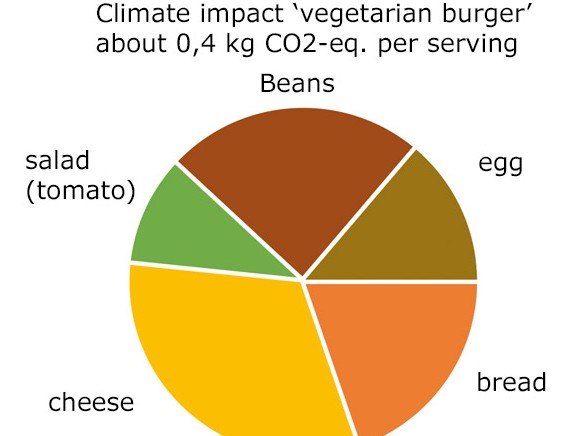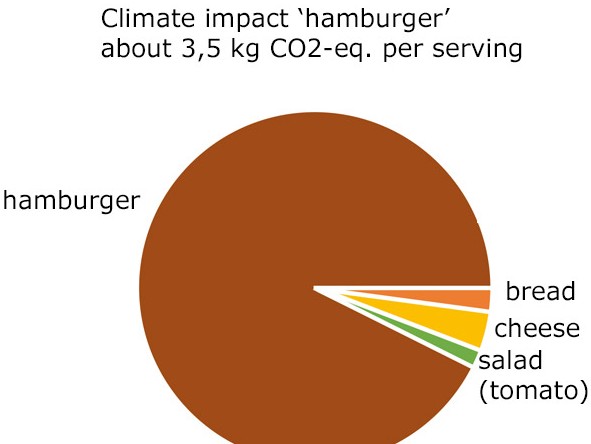
Making the global food supply more sustainable is a major challenge. The agri-food system has to meet an ever-increasing demand due to the growing world population. Furthermore, there is a new demand for non-food products made using biomass.
The increasing global population and the increasing wealth in non-Western countries is leading to a higher demand for high-quality food, particularly more meat. An FAO report (2012) showed that, although the meat consumption per person in developed countries is on the decline, it continues to increase every year in developing countries. It is foreseen that the increase in meat consumption for the total global demand will last for decades. In the meantime, it is becoming increasingly clear that the current high production of meat is not all that sustainable. The production and consumption of animal-based proteins is responsible for large emissions of greenhouse gases (see pie charts). The government and other stakeholders are increasingly aware of sustainability impact of this consumption. People are also becoming more socially conscious of the need to take better care of the planet. The cultural shift is happening slowly, but it is without a doubt under way.
There is increasing focuse on progressively moving towards lower, healthier and more sustainable consumption in the Western world. This involves more plant-based and less animal-based proteins (such as suggested in the report “Naar een meer plantaardig voedingspatroon” (Towards a more plant-based diet) from the Voedingscentrum in 2018). Within the EU, it is expected that meat consumption will continue to increase, but that red meat consumption will actually decrease. It will be partially replaced by white meat and possibly other sources of protein. There is also a shift from meat towards “meat products” with significant increase of consumption of hybrid products (consisting of both meat and vegetable components). This last category utilises the positive nutritional value of proteins in meat (essential amino acids, iron and vitamin B12) with the advantage of the sense of fullness yielded from plant-based fibre. Not to mention these are less energy dense, which is particularly useful for addressing obesity. These products have a lower impact on climate than pure meat.
The concept of sustainable meat in our society is primarily focused on animal welfare. Over 98% of “sustainable meat” is labelled with the “better life” quality label (2016 Sustainable Food Monitor). However, in addition to the focus on animal welfare, there are other sustainability indicators that demand urgent attention. Examples of these are land and water use as well as greenhouse gas emissions. Focus on reducing losses and waste (both in the supply chain as well as by the consumer) can benefit these issues as can reducing and preventing inefficiency in the chain. After all, every kilogram of avoidable product loss represents a certain amount of CO2 emission and land use. For instance, solutions for extending shelf life, decreasing moisture loss, and taking better advantage of the value of the entire animal. No matter what measure you take, there are essential considerations that must be taken as well. What are net effect? Decreased storage temperature, longer storage and increasing shelf life all cost more energy. Do these investments clearly yield more benefits for the environment due to substantially decreasing loss and spoilage? The specific answers are in the figures.

________________
Advantages: longer shelf life and less retail loss. The lower waste percentage decreases production amounts. For every kilogram of a product purchased by the consumer, less has to be invested.
Costs: lower cooling temperatures around or just below freezing demand 10% to 20% more energy in the refrigeration chain and on the retail shelf. Furthermore, the longer storage period on the retail shelf demands additional energy. Net effects for a theoretical scenario are quantitatively described in the table below.
|
|
Reference data
|
Chain with decreased storage temp. |
| Agricultural production + slaughter
|
10
|
9.8
|
| Packing material
|
0.08
|
0.08
|
| Cooling in the chain excl. retail
|
0.006
|
0.007
|
| Cooling in retail
|
0.06
|
0.18
|
| Total
|
10.146
|
10.067
|
Table 1
Comparing the climate impact for meat in typical conditions and at decreased temperatures (CO2 equivalent per kg of meat sold). Standard packaging, storage periods and loss percentages in the chain are applied; average data for beef, pork, and poultry. The effect of the storage period on product waste on retail shelves was estimated.
________________

The meat sector is constantly confronted with the challenge of smartly applying knowledge and new technologies for the sake of working more efficiently, effectively and sustainably. In recent decades, huge steps have been taken: more precise, faster measurement systems have been developed and new heating technologies have been designed that allow more nutrients to be retained in the product. Vision systems aid in more precise portioning as well as limiting damage and production loss. Better packaging concepts have strongly improved the shelf life and safety of products. All in all, innovations in automation, digitisation and robotisation are resulting in better valorisation of the product and of secondary streams, and also contribute to increasing production and decreasing product loss.
Current research topics include:
Finding new opportunities to take advantage of side streams for food, livestock feed and non-food applications;
Increasing the value of side stream applications, e.g. through use as human food instead of as livestock feed;
Making more intelligent robotic/vision systems for improving things like the efficiency of meat processing;
Better prediction of product shelf life, e.g. through the use of shelf-life prediction models.

It is widely confirmed that the production and consumption of meat has a larger climate impact than producing and consuming vegetables. Intriguingly, however, in practice, in both domains the same solutions are used for extending the shelf life: gas packaging in conjunction with refrigeration. Meat and vegetables have similar shelf lives. Mena ’s¹ data show that the retail loss figures in both categories are similar. However, meat products
have a much larger climate impact than the production of vegetables and in the supply chains for meat and pre-cut vegetables, comparable quantities of energy and packaging materials are used. Figure 1 shows estimates of the climate impact of various links in the supply chain for meat and for pre-cut vegetables. For an average loss of 10% in the supply chain for both products, the climate impact resulting from loss is much higher for meat than for vegetables. In short, the most relevant measures for meat supply chains are those that combat waste and result in a quick yield from a sustainability perspective.
¹ MENA, C., B. ADENSO-DIAZ & O. YURT (2011): THE CAUSES OF FOOD WASTE IN THE SUPPLIER–RETAILER INTERFACE: EVIDENCES FROM THE UK AND SPAIN, RESOURCES, CONSERVATION AND RECYCLING 55, PP. 648–658
Source: © JEZPER/SHUTTERSTOCK.COM